Here is the Volume 5 of Curling from When you watch something, visit us first! Ms. Mika MATSUZAWA, who represented Japan in Curling at the 19th Olympic Winter Games in Salt Lake City, USA, 2002, told us about about when aiming for Steal in Curling this time. This is the combined version of Part 5-1 through 5-3 on our YouTube channel.
In Vol.4, we learned about the End plan of Curling.
This time, Ms. Mika MATSUZAWA, who represented Japan in Curling at the 19th Olympic Winter Games held in Salt Lake City, USA, in 2002, told us about when the players aim for “Steal” during a Curling game.
I think you will understand how Curlers (Curling players) think about competing.
.png)
Part 5-1: Risks on Steal
In a game of Curling, there are situations in which a team has to aim Steal. The first case, for example, is when there is a large point difference. The losing team must catch up. Of course, for a losing team, it is important to score multiple points in the End with the last stone, but if the team has to score even in the End without the last stone to compete until the final 10th End, this team needs to aim for Steal in the End without the last stone.
However, what needs to be considered in this case is, when a losing team is eager to score a point, it is often that too many of their opponent’s stones are on the ice, if the opponent takes their stone out, resulting in further point difference and it would be “Game Over,” that to manage risk at the same time when going for Steal.
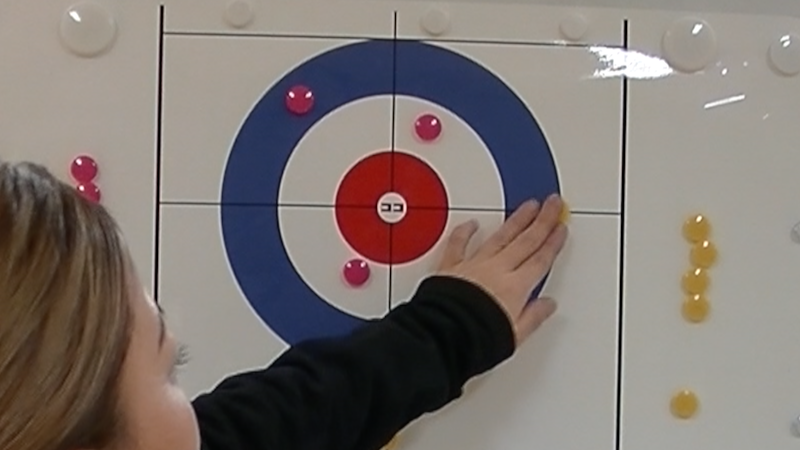
Basically, teams that do not have the last stone want to give their opponents score only 1 point, so it is not necessary to attack aggressively. The ideal situation for this team is to make the opponent score 1 point without taking too many risks, but there are situations in which they are necessary to take risks to score points. The losing team, then, has to consider how much that risk is, and how much risk they need to take to score points absolutely.
For them, of course they want to catch up in points, but when it is too early to take risks because it is still the first half of the game, they need to think at the same time about creating a situation where the opponent cannot score many points. If the losing team decides that Steal is difficult at some point, they should not hesitate to switch to a strategy that reduces the possibility of their opponent scoring a large number of points.
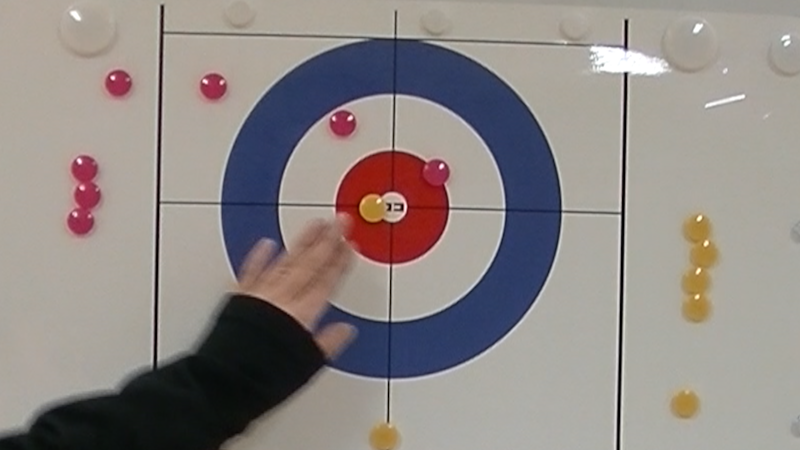
However, as the game advances, the losing team has to Steal to catch up with their opponents because there are only a few Ends left, so even if there are some the opponent’s stones on the ice, it is important for them to create their own No. 1 stone that cannot be taken out by utilizing the opponent’s stones in order to Steal.
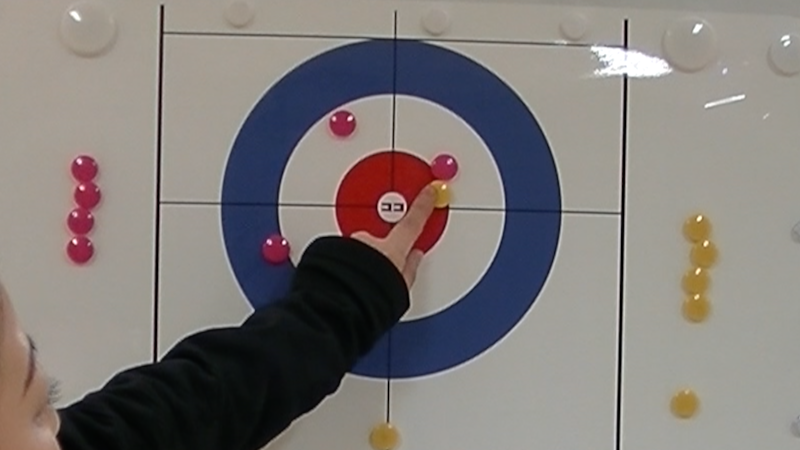
However, since some the opponent’s stones are on the ice, if the opponent is very skillful and takes out this Yellow stone only like this, there is a risk that the opponent will score a large number of points. Taking into account in what End they are as Game plan, and considering whether it is better to attack aggressively now or not, I think the shot selection will be determined.
Part 5-2: How to Steal
When going for Steal, they need Center Guard stones.
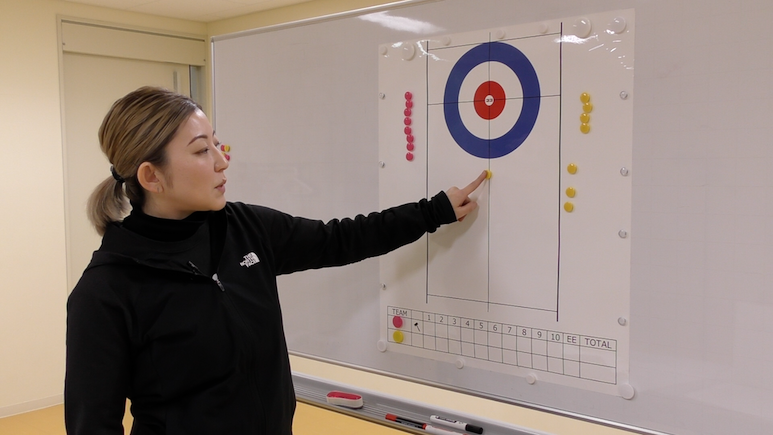
Regarding the position of Center Guard stones, if the ice condition is well “curl,” even if Guard stone is close to House, the thrown stone will go firmly behind Guard stone, so a Guard stone close to House will be enough to hide the stone, however, if the ice is not “curl,” the thrown stone may not be fully hidden behind Guard stone. Even if a thrown stone goes through the very close to Guard stone, it will not be well hidden.
In such cases, it is important to place Guard stone a little farther from House. Place Guard stones far, and wait for the thrown stone start to curl, and then hide it firmly behind Guard stone. The position of Guard stone. Players must choose where to place Guard stones while considering the distance of them from House.
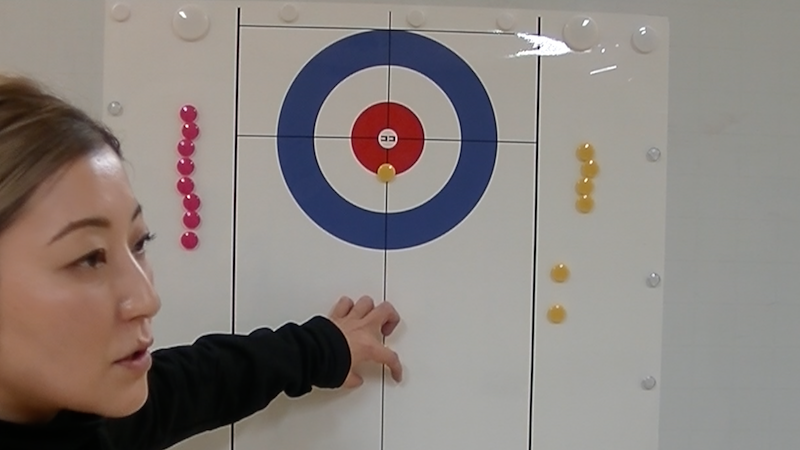
Then place Guard stones. Place 2 Guard stones on the center line. If they only have 1 Guard stone, once it is taken out, there is nothing, so they want to place 2 Guard stones, Double Center Guards, utilizing No Tick Shot Trial Rule well.
These Double Center Guards will also become stones that can be taken out even if it is on the center line when No Tick Shot Rule is not applied later on, so if these 2 Guard stones are too close to each other, Double Takeout is actually easy. Like this.
If this happens, they would lose 2 important Center Guard stones at the same time, so the basic idea is to keep them apart when placing Double Center Guard. By keeping them apart, it becomes very difficult to take 2 Guard stones out at one time.
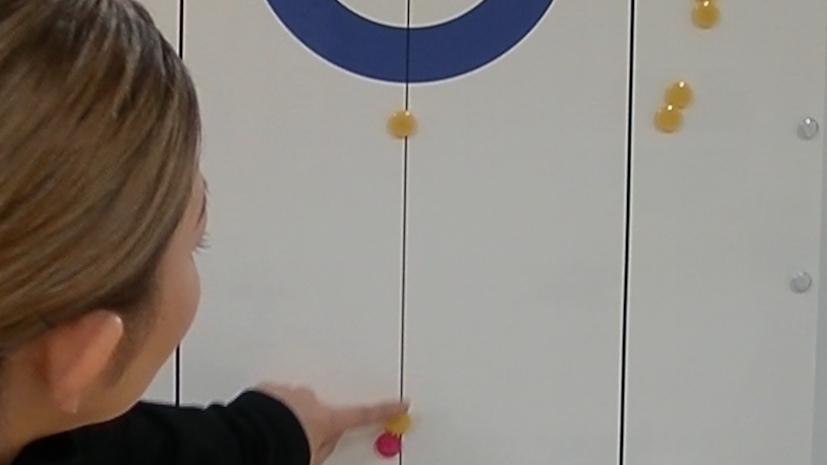
Now, the point is when to make a Steal-ready form with these Guard stones firmly in place, but keep Guard stones in place until about the 1st delivery of Third. When it comes to the 2nd delivery of Third, the Guard stones can be close. Anyway, it is important to completely hide the thrown stone behind Guard stone. By hiding it well, it is easy to have the opponent to make a mistake. If the stone behind Guard stones is seen even a little, the opponent will come definitely to take it out, so the key is to create a situation in which they can have the opponent to make a mistake, assuming that they hide the stone firmly behind Guard stones.
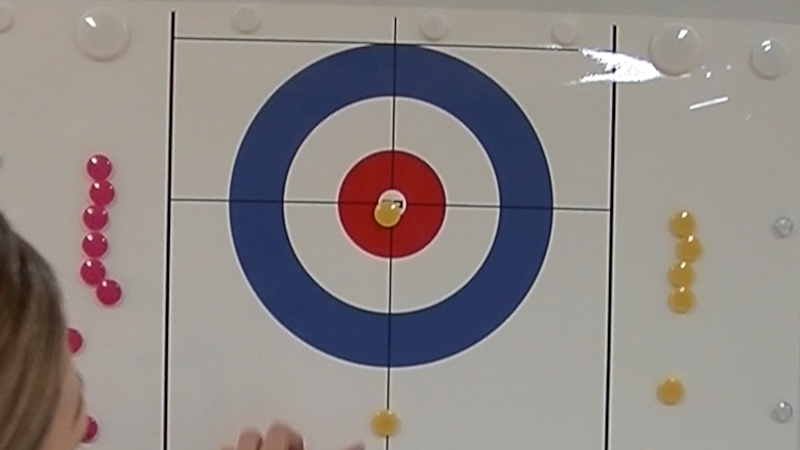
If the opponent delivers a stone in House first, they can attach their stone to the opponent’s stone if it is early in the End. The idea is to create a stone that cannot be removed first. First, they make a stone that cannot be taken out. However, if they keep placing Center Guard stones, their opponent’s No. 1 stone will remain in place. Then, when it comes to choosing when to move that stone, they must move the opponent’s stone firmly around the 2nd delivery of Third or the 1st delivery of Skip, and create a situation where they have the No. 1 stone.
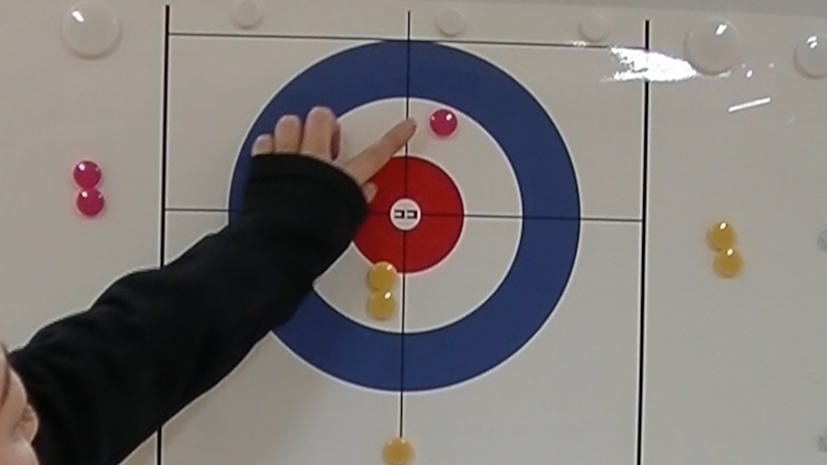
They don’t have to take that stone out. By pushing the opponent’s stone down to a position where it can be used as “Back Guard,” while leaving their own stone in House, the opponent may make a mistake and this stone may hit that moved stone, even though it might have been a shot they would have liked to make. If they do this early in the End, for example, if Center Guard stone is taken out, they have nothing to do left.
it may come to such a situation, by moving the opponent’s stones toward the last of the End, the opponent has to treat the stone in House rather than removing Center Guard stones. Or, as the opponent is going to allow Steal, they have to try to get back No.1 stone, so, in order to avoid such a situation, the strategy is to move the opponent’s stone in the latter part of the End. Until then, it will be important how they can keep this form.
Part 5-3: No last stone in 8th End
The first situation to aim for Steal is when a team is very far behind in points and have to catch up, and the second is when they don’t have the last stone in the 8th End. In Curling, players want not to have the last stone in the 9th End, but they want to have it in the 10th End. If a team scores in the 8th End in order to have the last stone in the 10th End, they can let their opponent score 1 point in the 9th End and thereby have the last stone in the 10th End. If they are in a situation where they can Steal without any risk, they may go to Steal in the 8th End, letting their opponent score 1 point in the 9th End, and securing the last stone in the 10th End.

But they absolutely must not take any risks here, so they will only Steal when they think they can do. In Curling, there are of course cases where players will set up and Steal.
For example, if they are aiming for a Steal on the 8th End in this situation, for example, it might be effective to put their stone by this opponent’s stone in this way. This is clearly going for Steal with risks. The reason why is that if they make a mistake on this shot, the opponent can easily score 2 points. They must not do this kind of Steal at all.

For example, in a situation like this, you are on the last delivery. The opponent can score 1 point in the current situation. Our stone is No.2. And the opponent’s stone is No.3, so it is very difficult for the opponent to score multiple points. The opponent probably has to aim for Double Takeout, for example, in this situation.
Then, for example, first to let the thrown stone hit this Guard stone like this. If there is a possibility of Double Takeout by the opponent from this side, then they push this stone in like this, as there are many Guard stones, to have a stone that is hard to be taken out. There is also a back Guard. This is how to score 1 point surely. This is not a bad way of Steal.

It is very good because they have scored on the 8th End, so they don’t have the last stone on the 9th End, but they can let their opponent score 1 point and have the last stone on the 10th End. As players, they definitely want to score on the 8th End, but they never take risks. The basic premise is that they only aim for Steal when they think they can Steal.
If they make even a slight mistake and they are in a situation where their opponent can score 2 points, they would not be so aggressive in Steal. They do not take risks. If they can create a situation where the opponent has no chance of scoring multiple points, then they will aim for Steal like this.
And this decision is also made around the last 2 deliveries of Skip. In this example, too, the players only chose to make Steal because it seemed possible to make Steal on the last delivery, and although it is not a situation where they aim for Steal from the beginning of the End, it is not bad to score 1 point on the 8th End as a possibility. Players can also consider that if they can make Steal, they will Steal.
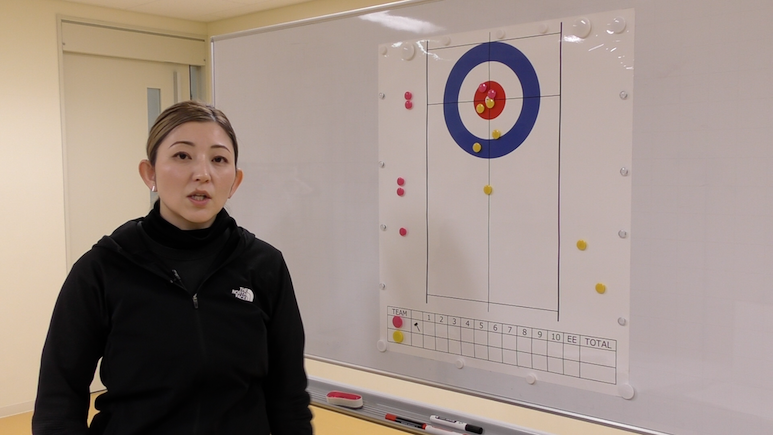
Share this content:
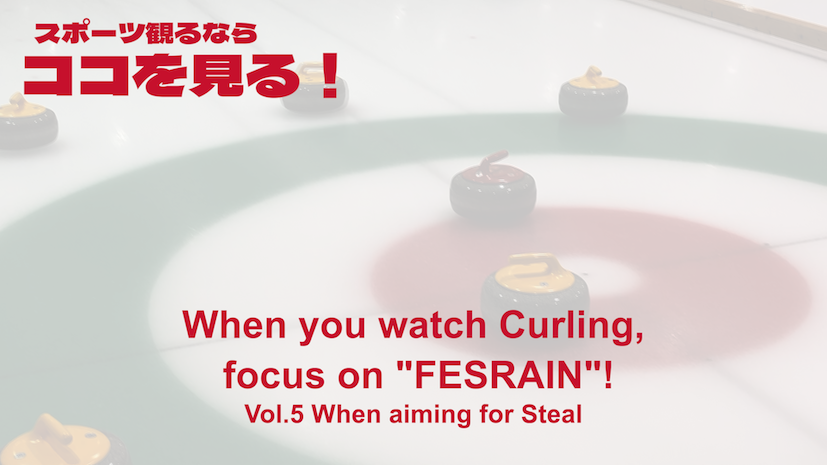
コメントを残す